 |
|
|
|
|
 How To Solve Puzzles
How To Solve Puzzles
How to Solve Codes









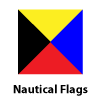

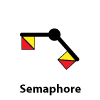
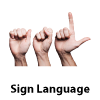





About Codes
Many puzzles, either stand-alone or as part of a larger puzzlehunt, use codes of some sort to conceal an answer. There are countless ways of encoding a final solution and trying to keep track of all of them is not so easy. To aid you in your quest to uncover those elusive solutions, we have put together a comprehensive compendium of various encoding schemes.
It might not always be apparent what sort of code you should use. While trial and error is always an option, you might also consider examining other features of the puzzle. Perhaps there are some clues with odd wording or maybe the title doubles as a hint. Other times there is an indication in what is known as the flavor text of a puzzle. The flavor text is often a short blurb that accompanies a puzzle and while it may look like a normal introduction or description, there may be a carefully veiled hint hidden inside. Here's an example: "Don't feel bad if you can't see the answer right away; we are confident that with the right touch, you will navigate the bumps in the road and arrive at the solution." Although it reads like a normal sentence, the words "feel," "can't see," "touch," and "bumps" might indicate that Braille might play a key role in unraveling the solution. While no list will ever be definitive, below are some of the most common words and phrases used to hint at particular codes.
| Alphabet | ABC, ABCs, alpha, alphabet, 5-bit binary, capital, character, letter, message, say, syllabary, ternary, writing, written, XYZ, 26, 27 |
| ASCII | alphabet, ASCII, binary, 7-bit binary, 8-bit binary, computer code, decimal, hex, hexadecimal, numbers |
| Astronomy | alphabet, astral, astronomy, celestial, heavens, planets, sky, space, star, stellar, sun, any planet name |
| Braille | blind, blindly, bumps, bumpy, dots, feel, finger, holes, in the dark, raised, see, sightless, tactile, texture, touch |
| Greek | alpha, alphabet, college, frat, fraternity, Greek, house, math, mathematics, omega, Phoenician, science, sorority |
| Kitchen | amount, bake, baking, capacity, convert, conversion, cook, cooking, liquid, measure, measurement, volume |
| Morse | CB, CBer, dah, dahs, dash, dashes, dit, dits, dot, dots, gap, long, radio, Sam, Samuel, short, SOS, stop, telegraph |
| Music | audio, aural, music, note, notes, sang, scale, sing, singing, song, Sound of Music |
| Nautical Flags | NATO, Nautical, navigate, navy, sail, sailing, sea, ship, signal, wave |
| Pigpen | Charlie Brown, dirty, farm, farming, intersections, lines, oink, Peanuts, sty |
| Semaphore | angle, angles, arms, at a distance, at sea, clock, clock hands, degree, degrees, flag, flagging, flags, hands, railroad, railway, signal, signals, signaling, time, waving arms |
| Sign Language | ASL, deaf, hand, hands, shadow puppet, sign, signs, signing |
| States | America, capital, continental, country, fifty, president, union, united, USA |
| Word Alphabets | Alpha, Bravo, Charlie, NATO, Western, Union |
| Zodiac | 12, Age, animals, astral, astrology, astronomy, birthday, celestial, circle, date, dates, elements, horoscope, longitude, latitude, planets, sign, signs, stars, twelve |
Alphabet position
The alphabet is, of course, a major component of many puzzles. While everyone knows the order of the 26 letters, most people cannot immediately recall that Q is the 17th letter. The position of a letter in the alphabet is always helpful but you might also need to know the corresponding letter in a reversed alphabet.
| Position | Alphabet | Reversed Alphabet |
Binary | Ternary |
ASCII
ASCII stands for the American Standard Code for Information Interchange. This encoding scheme is used to represent text for communication between computers and any other digital device. It translates the 95 printable characters (alphabet, punctuation, symbols) into hexadecimal, decimal, and binary. Using one of these three notations eliminates ambiguity and allows for messages to be transmitted more easily across a variety of platforms.
| Character | Hexadecimal | Decimal | Binary |
Astronomy
Astronomy is the study of celestial bodies including planets, moons, stars, and asteroids. The table below collects information about the most well-known of these space objects. We have included the commonly accepted calculations for volume, mass, diameter, and distance from the sun, as well as the astrological symbol.
| Celestial Body | Volume | Mass | Diameter | Average Distance from the Sun |
 |
1.412×1018 km3 | 1.9891×1030 kg | 1,392,684 km | 0 |
 |
6.083×1010 km3 | 3.3022×1023 kg | 4,880 km | 58 million km |
 |
9.28×1011 km3 | 4.8685×1024 kg | 12,092 km | 108 million km |
 |
1.08321×1012 km3 | 5.9736×1024 kg | 12,742 km | 150 million km |
 |
2.1958×1010 km3 | 7.3477×1022 kg | 3,474 km | 150 million km |
 |
1.6318×1011 km3 | 6.4185×1023 kg | 6,792 km | 230 million km |
 |
1.4313×1015 km3 | 1.8986×1027 kg | 142,984 km | 778 million km |
 |
8.2713×1014 km3 | 5.6846×1026 kg | 120,536 km | 1.4 billion km |
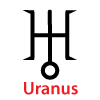 |
6.833×1013 km3 | 8.68×1024 kg | 51,118 km | 3 billion km |
 |
6.254×1013 km3 | 1.0243×1026 kg | 49,528 km | 4.5 billion km |
 |
6.39×109 km3 | 1.31×1022 kg | 2,306 km | 5.9 billion km |
 |
9.1×1020 kg | 940 km | 414 million km | |
 |
2.11×1020 kg | 544 km | 414 million km | |
 |
2.67×1019 kg | 233 km | 400 million km | |
 |
2.6×1020 kg | 526 km | 353 million km | |
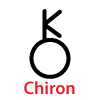 |
2×1018 to 1019 kg | 200 km | 2 billion km |
Braille
After going blind in a childhood accident, Frenchman Louis Braille developed the first version of his writing system in 1824. Braille consists of variations of a 2x3 grid of dots, where the pattern of raised and unraised bumps determines the character or letter. By feeling each character with ones finger, it is possible to read messages tactilely instead of visually. The following images show the Braille representations for each letter of the alphabet. The first ten can also signify the 10 different numerals when used in conjunction with the the Braille character for 'number' (see the table below.) For example, 'number' followed by the Braille character for A will indicate a 1.



























Braille can be used to depict not only the 26 letters of the alphabet but also common letter combinations, frequently seen words, and punctuation. The table below lists all of the 64 unique configurations of a 2x3 grid. To read this table, combine one of the 7 possible configurations on the far left column with one of the 7 possible configurations in the top row.

Greek Alphabet
The Greek alphabet is one the oldest forms of writing and has been in use since the 8th century BC. It originally derived from the 22 letters of the ancient Phoenician language, and over time has evolved into the modern day set of 24 letters and associated symbols. While certainly used as the primary communication method throughout Greece, the Greek alphabet has a much broader reach. The names and symbols appear in mathematics, physics, and various other sciences, as well as in names of fraternities and sororities.
| Name | Uppercase | Lowercase |
Kitchen Conversions
While the metric system allows for easy and quick conversions, the Imperial system unfortunately does not. It's fairly simple to switch between liters and milliliters but not too many people remember how to convert between ounces and gallons The table below shows the major imperial units and the odd relationships they share.
| abbr. | Teaspoons | Tablespoons | Ounces | Gills | Cups | Pints | Quarts | Gallons | |
| Teaspoon | t, tsp | — | 1/3 | 1/6 | 1/24 | ||||
| Tablespoon | T, tbsp | 3 | — | 1/2 | 1/8 | 1/16 | |||
| Ounce | fl oz, oz | 6 | 2 | — | 1/4 | 1/8 | 1/16 | ||
| Gill | gi | 24 | 8 | 4 | — | 1/2 | 1/4 | 1/8 | |
| Cup | c, C | 48 | 16 | 8 | 2 | — | 1/2 | 1/4 | 1/16 |
| Pint | pt | 96 | 32 | 16 | 4 | 2 | — | 1/2 | 1/8 |
| Quart | qt | 192 | 64 | 32 | 8 | 4 | 2 | — | 1/4 |
| Gallon | gal | 768 | 256 | 128 | 32 | 16 | 8 | 4 | — |
| Peck | pk | 1536 | 512 | 256 | 64 | 32 | 16 | 8 | 2 |
| Bushel | bu | 6144 | 2048 | 1024 | 256 | 128 | 64 | 32 | 8 |
| Firkin (beer) | fir | 6912 | 2304 | 1152 | 288 | 144 | 72 | 36 | 9 |
| Hogshead | hhd | 48384 | 16128 | 8064 | 2016 | 1008 | 504 | 252 | 63 |
| Firkin (wine) | fir | 46080 | 17920 | 8960 | 2240 | 1120 | 560 | 280 | 70 |
Morse Code
Morse code was invented by Samuel Morse in the 1830s as a mode of communicating through telegraphy. It was used extensively with early radio communication and was crucial during World War II. Each letter or number is represented by a unique sequence of dashes and dots where a dash is three times as long as a dot. When sending a message via telegraph, a short pause equal to the duration of a dot is inserted after each dot or dash for clarity. Complete words, on the other hand, are separated by a longer pause which is equal to the duration of three dots (the equivalent of one dash.) The first table shows the corresponding sequence for each letter and number in order.
|
A B C D E F G |
•- -••• -•-• -•• • ••-• --• |
H I J K L M N |
•••• •• •--- -•- •-•• -- -• |
O P Q R S T U |
--- •--• --•- •-• ••• - ••- |
V W X Y Z |
•••- •-- -••- -•-- --•• |
0 1 2 3 4 |
----- •---- ••--- •••-- ••••- |
5 6 7 8 9 |
••••• -•••• --••• ---•• ----• |
The various sequences of dots and dashes were determined based on letter frequency where the most frequent letters were assigned the shortest sequence. Thus the most common letter, E, is represented by the shortest sequence, one dot. This second table contains the same information as the first table, except that here the Morse code sequences are ordered from shortest to longest.
|
• - |
E T |
•• •- -• -- |
I A N M |
••• ••- •-• •-- -•• -•- --• --- |
S U R W D K G O |
•••• •••- ••-• •-•• •--• •--- -••• -••- -•-• -•-- --•• --•- |
H V F L P J B X C Y Z Q |
Music
Written music uses clefs to indicate the pitch of the notes on the staff. The two most common clefs are shown below: the Treble Clef (or G-clef), top, and the Bass Clef (or F-clef), bottom. If the clef symbol is shown in a different position on the staff, you can tell the pitch of the notes by the position of the symbol. With a Treble clef, the G4 note line passes through the curl of the clef; with a Bass clef, the F3 note line passes between the two dots of the clef.
The piano keys below show all of the notes in one octave, the interval between a musical pitch and another with half or double its frequency. There are 7 white keys which correspond to the notes A through G and 5 black keys which correspond to intermediate notes that are either lowered (flat) or raised (sharp) by a half step. Each of the notes is also labeled with its corresponding name on the solfège scale.


Nautical Flags
The colorful flags below are known as the international maritime signal flags. They correspond directly with the NATO alphabet and can be used to spell a message letter by letter. As well as representing an individual letter, each flag also has a specific standard meaning. For instance, the yellow and red flag for O also means "Man overboard."
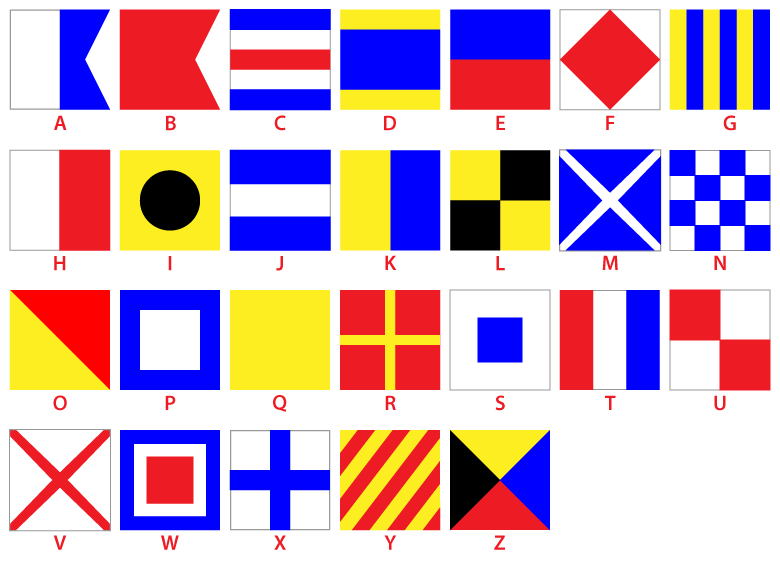
Pigpen Cipher
The Pigpen cipher is one of the oldest codes but also one of the most well known. It dates back to the 18th century and is associated with groups such as the Rosicrucian brotherhood and the Freemasons. Originally used to conceal message and keep records secret, it is now a common device used in various puzzles and was even featured in Dan Brown's popular novel The Lost Symbol. The geometric grids produce a simple substitution method for the letters of the alphabet. Note how the dots help eliminate ambiguities between the grids - for example, A and J use the same grid shape but can be distinguished from each other with the dot. Although there are many variations of the grids and letter placements, below you will find the most common version of the Pigpen cipher.
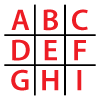
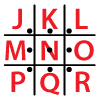
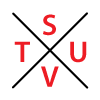
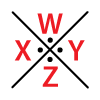
Here is an example of how to decode a message using the Pigpen cipher. Match each image with the corresponding section in one of the grids and you will spell out the answer letter by letter. In this case, the answer is ANSWER.

Semaphore
Used primarily for maritime purposes, semaphore is a way of visually conveying messages from a distance. As you look through the semaphore notation for each letter, imagine a naval flagman standing on the deck of a distant ship using his arms to spell out a message letter by letter. You might consider using semaphore when a puzzle involves or makes references to time or clocks, as the clock hands mimic the flag positions. Really any sort of visual representation with angles (in multiples of 45 degrees) might be a good indication that you should use semaphore.


























The table below shows another way of displaying the various semaphore symbols. Match up an angle in the leftmost column with an angle in the top row to form one of the 49 possible combinations. Note that not all combinations produce a valid symbol.

Yet another way of interpreting semaphore symbols can be seen below. Each image depicts all letters that can be formed from a certain set of congruent angles. From left to right, they show the letters that can be formed with 45-, 90-, 180- and 135-degree angles.








American Sign Language
American Sign Language, or ASL, is a way of communicating using the hands and other parts of the body to express various letters, words or concepts. ASL is the primary mode of communication among deaf communities and is considered a natural language with its own syntax and grammar. Many words have a specific sign but it is sometimes necessary to spell out a word letter by letter. The images below depict each letter of the alphabet as well as the first 10 numbers.

A

B

C

D

E

F

G

H

I

J

K

L

M

N

O

P

Q

R

S

T

U

V

W

X

Y

Z

1

2

3

4

5

6

7

8

9

10
The United States
The fifty states have a long and storied history and collectively they form the United States of America. From Alabama to Wyoming, each state has its own climate, culture, and quirks. Here we present the basic facts including, postal codes, capitals, nicknames, and information about when each state joined the Union.
| Postal | Capital | Statehood | |||
| State | Code | City | Nickname(s) | Date | # |
| Alabama | AL | Montgomery | Yellowhammer State, Heart of Dixie, Camellia State, Cotton State | Dec 14, 1819 | 22 |
| Alaska | AK | Juneau | Last Frontier, Land of Midnight Sun, Seward's Folly | Jan 03, 1959 | 49 |
| Arizona | AZ | Phoenix | Grand Canyon State, Copper State | Feb 14, 1912 | 48 |
| Arkansas | AR | Little Rock | Natural State, Land of Opportunity, Razorback State | Jun 15, 1836 | 25 |
| California | CA | Sacramento | Golden State | Sep 9, 1850 | 31 |
| Colorado | CO | Denver | Centennial State, Colorful Colorado | Aug 1, 1876 | 38 |
| Connecticut | CT | Hartford | Constitution State, Nutmeg State | Jan 9, 1788 | 5 |
| Delaware | DE | Dover | First State, Diamond State, Blue Hen State, Small Wonder | Dec 7, 1787 | 1 |
| Florida | FL | Tallahassee | Sunshine State | Mar 3, 1845 | 27 |
| Georgia | GA | Atlanta | Peach State, Empire of South, Goober State | Jan 2, 1788 | 4 |
| Hawaii | HI | Honolulu | Aloha State, Pineapple State | Aug 21, 1959 | 50 |
| Idaho | ID | Boise | Gem State, Spud State | Jul 3, 1890 | 43 |
| Illinois | IL | Springfield | Prairie State, Land of Lincoln | Dec 3, 1818 | 21 |
| Indiana | IN | Indianapolis | Hoosier State | Dec 11, 1816 | 19 |
| Iowa | IA | Des Moines | Hawkeye State | Dec 28, 1846 | 29 |
| Kansas | KS | Topeka | Sunflower State, Wheat State, The Land of Ah's | Jan 29, 1861 | 34 |
| Kentucky | KY | Frankfort | Bluegrass State | Jun 1, 1792 | 15 |
| Louisiana | LA | Baton Rouge | Pelican State, Sugar State, Bayou State | Apr 30, 1812 | 18 |
| Maine | ME | Augusta | Pine Tree State, Vacationland | Mar 15, 1820 | 23 |
| Maryland | MD | Annapolis | Old Line State, Free State, Chesapeake Bay State, America in Miniature | Apr 28, 1788 | 7 |
| Massachusetts | MA | Boston | Bay State, Old Colony State | Feb 6, 1788 | 6 |
| Michigan | MI | Lansing | Great Lakes State, Wolverine State, Mitten State, Water-Winter Wonderland | Jan 26, 1837 | 26 |
| Minnesota | MN | Saint Paul | North Star State, Gopher State, Land of 10,000 Lakes, Bread and Butter State | May 11, 1858 | 32 |
| Mississippi | MS | Jackson | Magnolia State, Hospitality State | Dec 10, 1817 | 20 |
| Missouri | MO | Jefferson City | Show Me State, Cave State | Aug 10, 1821 | 24 |
| Montana | MT | Helena | Treasure State, Big Sky Country | Nov 8, 1889 | 41 |
| Nebraska | NE | Lincoln | Cornhusker State | Mar 1, 1867 | 37 |
| Nevada | NV | Carson City | Silver State, Battle Born State, Sagebrush State | Oct 31, 1864 | 36 |
| New Hampshire | NH | Concord | Granite State | Jun 21, 1788 | 9 |
| New Jersey | NJ | Trenton | Garden State | Dec 18, 1787 | 3 |
| New Mexico | NM | Santa Fe | Land of Enchantment | Jan 06, 1912 | 47 |
| New York | NY | Albany | Empire State | Jul 26, 1788 | 11 |
| North Carolina | NC | Raleigh | Tar Heel State, Old North State | Nov 21, 1789 | 12 |
| North Dakota | ND | Bismarck | Peace Garden State, Flickertail State, Roughrider State, Sioux State | Nov 2, 1889 | 39 |
| Ohio | OH | Columbus | Buckeye State, Mother of Modern Presidents | Mar 1, 1803 | 17 |
| Oklahoma | OK | Oklahoma City | Sooner State, Panhandle State | Nov 16, 1907 | 46 |
| Oregon | OR | Salem | Beaver State | Feb 14, 1859 | 33 |
| Pennsylvania | PA | Harrisburg | Keystone State, Quaker State | Dec 12, 1787 | 2 |
| Rhode Island | RI | Providence | Ocean State, Little Rhody | May 29, 1790 | 13 |
| South Carolina | SC | Columbia | Palmetto State | May 23, 1788 | 8 |
| South Dakota | SD | Pierre | Mount Rushmore State, Coyote State | Nov 2, 1889 | 40 |
| Tennessee | TN | Nashville | Volunteer State | Jun 1, 1796 | 16 |
| Texas | TX | Austin | Lone Star State | Dec 29, 1845 | 28 |
| Utah | UT | Salt Lake City | Beehive State | Jan 4, 1896 | 45 |
| Vermont | VT | Montpelier | Green Mountain State | Mar 4, 1791 | 14 |
| Virginia | VA | Richmond | Old Dominion, Mother of Presidents | Jun 25, 1788 | 10 |
| Washington | WA | Olympia | Evergreen State, Chinook State, Apple State | Nov 11, 1889 | 42 |
| West Virginia | WV | Charleston | Mountain State | Jun 20, 1863 | 35 |
| Wisconsin | WI | Madison | Badger State, America's Dairyland | May 29, 1848 | 30 |
| Wyoming | WY | Cheyenne | Equality State, Cowboy State, Big Wonderful Wyoming | Jul 10, 1890 | 44 |
Flags of the States

Alabama
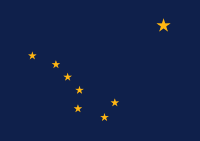
Alaska

Arizona

Arkansas

California

Colorado

Connecticut

Delaware

Florida

Georgia

Hawaii

Idaho

Illinois

Indiana

Iowa

Kansas
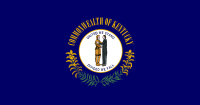
Kentucky

Louisiana

Maine

Maryland

Massachusetts

Michigan

Minnesota

Mississippi

Missouri

Montana

Nebraska

Nevada

New Hampshire
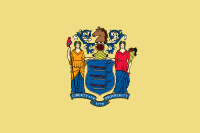
New Jersey

New Mexico

New York

North Carolina

North Dakota

Ohio

Oklahoma

Oregon
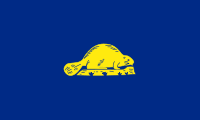
Oregon (back)

Pennsylvania
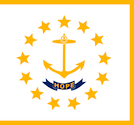
Rhode Island

South Carolina

South Dakota

Tennessee

Texas

Utah

Vermont

Virginia

Washington
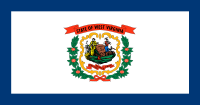
West Virginia
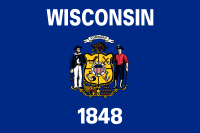
Wisconsin
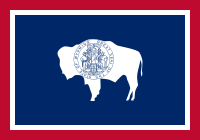
Wyoming
Word Alphabets
These two alphabets consist of certain code words assigned to each letter of the alphabet. These words were chosen deliberately so as to provide clarity when transmitting strings of letters. Since the pronunciations of many letters often sound too similar, using the distinct words in these alphabets helps eliminate any confusion.
| NATO | Western Union | |||
|
Alfa Bravo Charlie Delta Echo Foxtrot Golf Hotel India Juliet Kilo Lima Mike November Oscar Papa Quebec Romeo Sierra Tango Uniform Victor Whiskey X-ray Yankee Zulu |
Adams Boston Chicago Denver Easy Frank George Henry Ida John King Lincoln Mary New York Ocean Peter Queen Roger Sugar Thomas Union Victor William X-ray Young Zero |
Zodiac
The term Zodiac has roots in Latin and Greek words meaning "circle of animals" and most of the signs are indeed represented by animals. The 12 signs of the Zodiac correspond to the Sun's path over the course of a full year. Each day of the year falls under one of the 12 signs, each of which has its own significance and associated meanings. The pertinent information has been collected here in this table.
| Sign | Name | Date Range | Longitudinal Interval | Associated Element | |
 |
The Ram | March 21 to April 20 | 0-30 | Fire | |
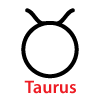 |
The Bull | April 21 to May 20 | 30-60 | Earth | |
 |
The Twins | May 21 to June 20 | 60-90 | Air | |
 |
The Crab | June 21 to July 21 | 90-120 | Water | |
 |
The Lion | July 22 to August 22 | 120-150 | Fire | |
 |
The Maiden | August 23 to September 22 | 150-180 | Earth | |
 |
The Scales | September 23 to October 22 | 180-210 | Air | |
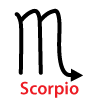 |
The Scorpion | October 23 to November 21 | 210-240 | Water | |
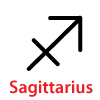 |
The Archer | November 22 to December 21 | 240-270 | Fire | |
 |
The Goat | December 22 to January 20 | 270-300 | Earth | |
 |
The Water-bearer | January 21 to February 19 | 300-330 | Air | |
 |
The Fish | February 20 to March 20 | 330-360 | Water |



|
Our Puzzle Books Buy Gift Certificates
Our World-Class Authors
How to Solve Puzzles
Our exclusive, award-winning TouchWrite™ handwriting recognition
Special features: Puzzles Live 2013 100th Anniversary of the Crossword
Get the puzzle of the day:
Read the latest Puzzazz Newsletter
About Us Contact Us Support FAQ Read the Buzz about Puzzazz
Your account Redeem a coupon or special offer
Cookies: If you sign in, we use a cookie for that purpose. We also use cookies to manage your browser session.
If you use third-party services, such as Facebook, with Puzzazz, they may use cookies following their own policies.
© 2025 Puzzazz Privacy Policy



